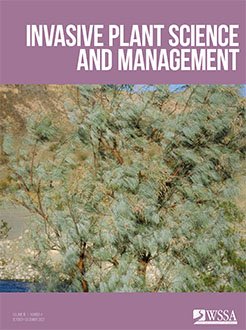Trait differences between invasive plants and the plants in their recipient communities moderate the impact of invaders on community composition. Callery pear (Pyrus calleryana Decne.) is a fast-growing, stress-tolerant tree native to China that has been widely planted for its ornamental value. In recent decades, P. calleryana has naturalized throughout the eastern United States, where it spreads rapidly and achieves high abundance in early-successional environments. Here we compare the impacts of low-density, establishment-phase P. calleryana to those of functionally similar native trees on the understory community diversity and total cover of three early-successional meadows in Indiana's Eastern Corn Belt Plains. In contrast to our prediction that P. calleryana would have greater negative effects on the total abundance and diversity of the understory plant community compared with native tuliptree (Liriodendron tulipifera L.), American sycamore (Platanus occidentalis L.), or non-tree control plots, we found that these low-density populations of P. calleryana had no significant impact on total cover, species richness, or diversity indices for the understory community compared with the native trees and non-tree control plots. Likewise, the studied populations of P. calleryana had no significant impact on the native, introduced, woody, or native tree subsets of the understory community. These results indicate that in young, low-density populations situated in early-successional meadows, the trait differences between P. calleryana and functionally similar native trees are not of a great enough magnitude to produce changes in community composition. Going forward, complementary research on the impacts of P. calleryana on community composition and ecosystem processes in areas with long-established, dense invasions or invasions in more sensitive ecosystems would allow us to more fully understand how this widespread invader disrupts its host ecosystems.
How to translate text using browser tools
6 November 2023
Invasion by Callery pear (Pyrus calleryana) does not affect understory abundance or diversity in early-successional meadows
Andrea N. Nebhut,
Jeffrey S. Dukes
ACCESS THE FULL ARTICLE
biological invasion
forest regeneration
invader impact
Succession






